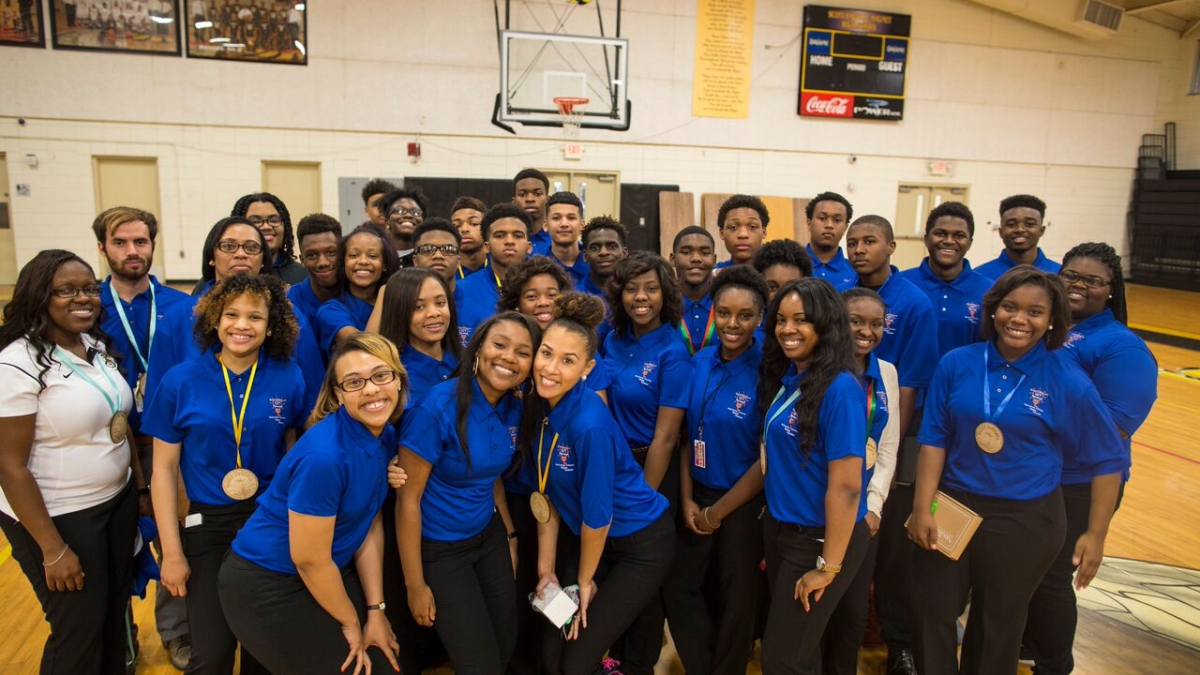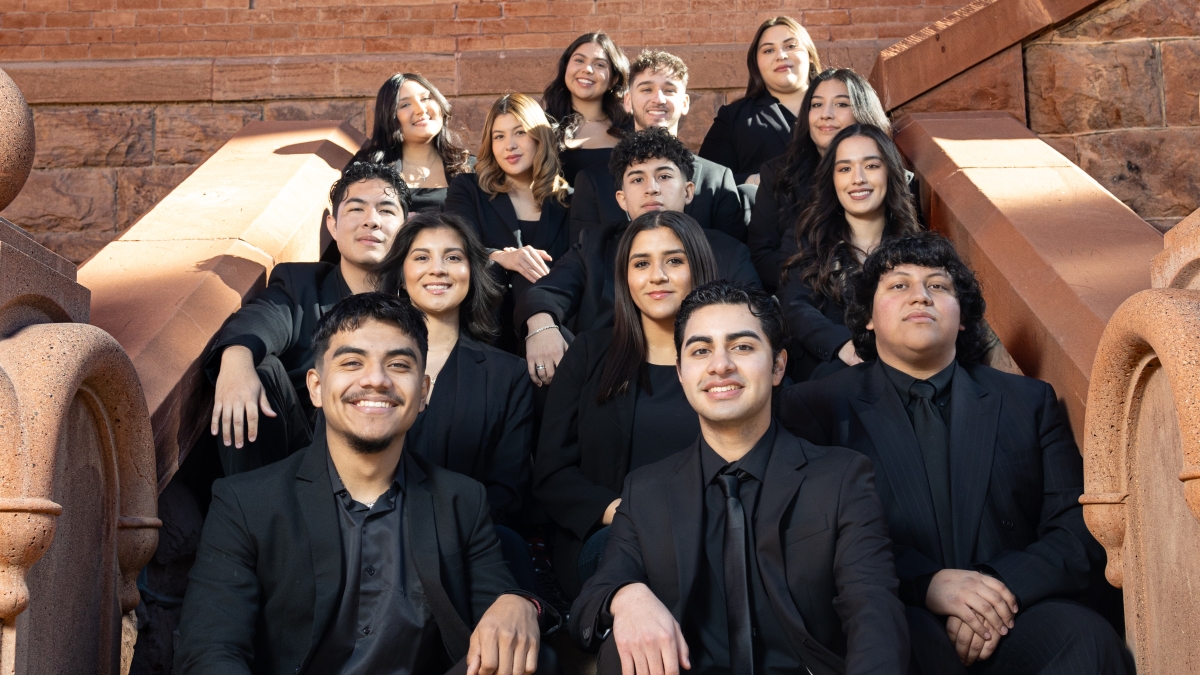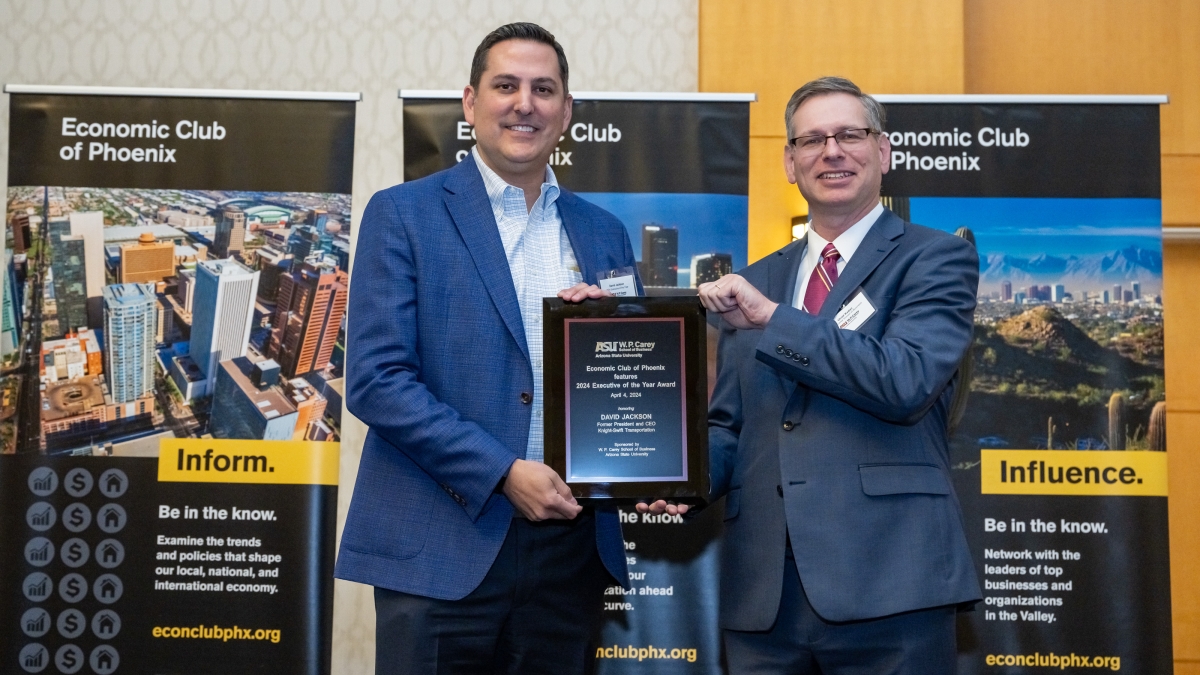Instilling an entrepreneurial mind-set in high schoolers
Obama visiting one of eight schools using ASU program that teaches students how to creatively solve problems in community

Just two days after his final State of the Union address, President Barack Obama will make his first trip as president to Baton Rouge, Louisiana, where he will speak Thursday morning at McKinley High School.
McKinley High is one of eight schools across the nation partaking in the Innovation through Design Thinking (iDT) program, a product of Arizona State University’s Office of Entrepreneurship and Innovation that trains teachers to embed entrepreneurial thinking in their classrooms.
Katherine Clemens, manager of K-12 initiatives for the Office of Entrepreneurship and Innovation, helped develop the program to meet the growing need for more entrepreneurial and STEM-based curricula at the high school level, and especially among underrepresented communities.
“For students to be successful in the jobs of the future, for students to be able to solve the challenges of the future, it is critical that they have an innovative mind-set,” said Clemens. “To do this, we need to teach students how to think entrepreneurially and how to use an innovative design process, which is essential to the creative problem-solving process.”
In the iDT program, all of that is tied to real-world problem-solving in the students’ own communities, where they collaborate with local businesses to find solutions through the development of a mobile app — a process that is beneficial to both the students and the businesses.
“The feedback from the businesses has been great,” said Clemens, who often travels around the country to check in on the different schools, assess what’s working and make changes where necessary.
“They have so much enthusiasm about being connected to education and the students because they feel value in the fact that they’re teaching the students a lot. The students have enjoyed learning about small businesses and nonprofits because many have their own entrepreneurial ideas, and one of the goals of the program is to teach them how to make their ideas a reality, to show them what the day-to-day of that looks like, what the process looks like, and why it’s important to support local businesses.
“As well, the students are able to apply their knowledge and skills in a meaningful way that shows them how they can contribute to their community, and [the local businesses] are able to get an outside perspective, which is great.”

Katherine Clemens, manager of K-12 initiatives for ASU's Office of Entrepreneurship and Innovation, said the students and the teachers training them in app development have found the whole iDT process empowering.
One of the projects students at McKinley are working on is in collaboration with Knock Knock Children's Museum, a brand-new museum that will open this year down the street from the high school. Through the iDT program, students were trained in app development, marketing and business strategy to develop an app to schedule tours; provide directions and museum times; send push notifications for museum events; provide a museum map locator to let patrons know where they are in the museum; and offer a how-to-get-to-another-museum feature.
Clemens reports that both the students and the teachers who are training them in app development have found the whole process empowering.
“Overall, the teachers are very excited about it,” she said. “They have a lot of freedom to guide their students through the project to determine what will work best in their classroom. And the students are excited that they get to take on a leadership role, meeting directly with business owners.”
What’s more, many of the teachers who have participated in the program are eager to share what they’ve learned about teaching app development with other teachers in their schools, sometimes planning professional development courses to show other teachers how to do what they learned and serve the overall purpose of helping students develop an entrepreneurial mind-set.
“Entrepreneurial skills and design thinking are key to preparing high school students to thrive in an innovation economy,” said Sethuraman “Panch” Panchanathan, ASU's senior vice president for Knowledge Enterprise Development. “Using the train-the-trainer model as part of the Innovation through Design Thinking, ASU is empowering educators and their students to create solutions for challenges within their own communities.”
In iDT’s first year, it reached 12 teachers and 350 students. In its second year, those numbers have jumped to 24 teachers and more than 600 students. The Verizon Foundation has been a major player in helping to implement the program, awarding more than $1.2 million in grant funds to ASU since iDT’s launch in 2014.
According to Clemens, the program is a great example of how ASU is involved in embedding and advancing entrepreneurship in schools in underserved communities across the country and providing students a pathway to college.
“ASU is really creating a new higher-education experience that has a focus on entrepreneurship, social embeddedness and real-world problem-solving, so part of this project is to help share the knowledge and skills that we’ve developed to showcase ASU’s expertise in this area,” said Clemens.
On a larger scale, the iDT program is also poised to aid in showcasing the educational excellence of the U.S. as a country — one which President Obama passionately asserted in his address Tuesday is “the most powerful nation on Earth. Period.”
More Business and entrepreneurship

Hispanic Business Students Association marks half a century of impact, growth
When Michelle Macias, a native of Yuma, Arizona, became a business entrepreneurship and management student at Arizona State University in 2020, she was three hours away from home and stuck in her…

5 easy ways to improve your focus
Editor's note: This story originally appeared in the summer 2024 issue of ASU Thrive magazine. Do goldfish really have a longer attention span than the average person? No, thankfully, data busted…

Honoring homegrown leadership
When Phoenix native David Jackson was a finance student at Arizona State University’s West Valley campus, he gave separate presentations on two of the country’s largest trucking companies. Little did…